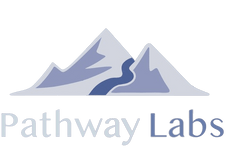In the realm of for-profit education, a critical principle known as the 90/10 rule has emerged. This rule proposes that for-profit schools should allocate no more than 90% of their revenue from federal financial aid programs, such as student loans, while the remaining 10% should be derived from other sources.
In this post, we will delve into the concept of the 90/10 rule for for-profit schools, its significance, how it impacts the quality of education provided by these institutions, and what it means for school administrators.
Understanding the 90/10 Rule
The 90/10 rule is a regulation imposed by the United States Department of Education, specifically targeting for-profit schools that receive federal financial aid. The 90/10 regulation states that no more than 90% of a for-profit school's revenue should come from these aid programs, while the remaining 10% should be generated through other means, such as tuition fees, private scholarships, or other non-governmental sources.
For those running a for-profit school, it is critical that you are properly tracking revenue reports and keeping a close eye on the figures to maintain 90/10 compliance.
Purpose and Benefits of the 90/10 Rule
There are a number of reasons why the Department of Education enacted the 90/10 regulation, and ultimately it provides benefits to students and their educational institutions for various reasons.
1. Accountability and Quality Assurance
The 90/10 rule serves as a measure to ensure that for-profit schools are financially stable and reliant on sources beyond federal funding. This requirement encourages institutions to focus on providing high-quality education and demonstrating their value to students and the community.
2. Protecting Students' Interests
By limiting the reliance on federal financial aid, the rule safeguards students from potentially predatory practices by for-profit schools. It encourages institutions to prioritize students' success rather than merely focusing on increasing enrollment to maximize federal funding.
3. Promoting Diversification of Revenue Streams
The 90/10 rule incentivizes for-profit schools to diversify their revenue streams. This can lead to the development of innovative educational programs, collaborations with industry partners, and enhanced efforts to attract private scholarships and grants.
4. Encouraging Educational Investment
For-profit schools must allocate a significant portion of their resources towards non-federal sources, driving them to invest in facilities, faculty, curriculum development, and student support services. This promotes an environment conducive to effective teaching and learning.
Challenges and Criticisms of the 90/10 Rule
Although there are benefits of the 90/10 rule, it has not been met with open arms. There are criticisms and resistance to the policy. As a school administrator, you can face a number of challenges due to the 90/10 rule.
1. Potential Exploitation of the Rule
Critics argue that for-profit schools may manipulate the rule by focusing on the minimum requirements rather than genuinely investing in the quality of education. This could lead to subpar educational experiences for students.
2. Limited Financial Aid Access
Some opponents suggest that the 90/10 rule restricts access to federal financial aid for students who may genuinely benefit from it, potentially limiting their educational opportunities.
3. Influence on Enrollment Practices
Critics also claim that the rule may influence for-profit schools to prioritize enrolling students who do not qualify for federal financial aid, potentially neglecting underprivileged individuals seeking access to higher education.
4. Disproportionate Impact
The 90/10 rule may disproportionately affect certain programs or institutions, particularly those serving low-income or minority populations. These schools may find it challenging to attract non-federal funding sources, leading to financial instability or closure.
Adapting to the 90/10 Rule
Although there is resistance and opposition to the regulation, as a for-profit school, you must accept and adapt to the changing educational policies. There are a number of ways to safeguard your institution and ensure you are maintaining compliance with governmental standards.
1. Financial Planning and Revenue Diversification
For-profit schools should focus on developing comprehensive financial plans that prioritize revenue diversification. This can include expanding industry partnerships, soliciting private donations, and creating targeted scholarship programs to reduce dependence on federal financial aid. You should have a robust financial reporting system in place, and having a tool like MyPath can help with this.
2. Enhancing Educational Quality
Schools can invest in improving the quality of education by allocating resources to faculty development, curriculum enhancement, student support services, and state-of-the-art facilities. By prioritizing educational excellence, schools can attract a wider range of students and revenue sources.
3. Emphasizing Student Success and Outcomes
By focusing on student success, for-profit schools can demonstrate their value and attract private investments. Emphasizing strong job placement rates, alumni success stories, and positive learning outcomes can help build credibility and financial support.
4. Collaboration and Partnerships
For-profit schools can explore collaborations with businesses, community organizations, and non-profit entities to enhance their reputation and generate additional revenue streams. Partnerships can lead to internships, research opportunities, and increased community engagement, creating mutually beneficial relationships.
5. Transparency and Accountability
Schools should prioritize transparency in reporting financial information, tuition costs, job placement rates, and student outcomes. By providing accurate and accessible data, for-profit institutions can build trust and confidence among prospective students, donors, and the public. Again, we recommend a system like MyPath to ensure you are able to produce any sort of facts, figures or reports needed when requested by different outside organizations or agencies.
In Conclusion
The 90/10 rule serves as an important regulatory measure for for-profit schools, aiming to ensure accountability, protect students' interests, and encourage revenue diversification. While it has its critics and challenges, the rule can drive for-profit institutions to prioritize educational quality, invest in student success, and seek innovative partnerships.
By embracing the principles of transparency, accountability, and continuous improvement, for-profit schools can navigate the requirements of the 90/10 rule while striving to provide high-quality education that benefits both students and society. If you’re in the need of a more robust reporting system for your school to ensure you’re meeting government standards, click here to learn more about MyPath.

